Uwe Rosenberg
Uwe Rosenberg is the designer of Agricola, one of their most iconic games. Since its release in 2007, Agricola has quickly become one of the most respected strategy games in the world of board games.
Such success led to it winning the coveted Spiel des Jahres in the Best Complex Game category the following year, in 2008.
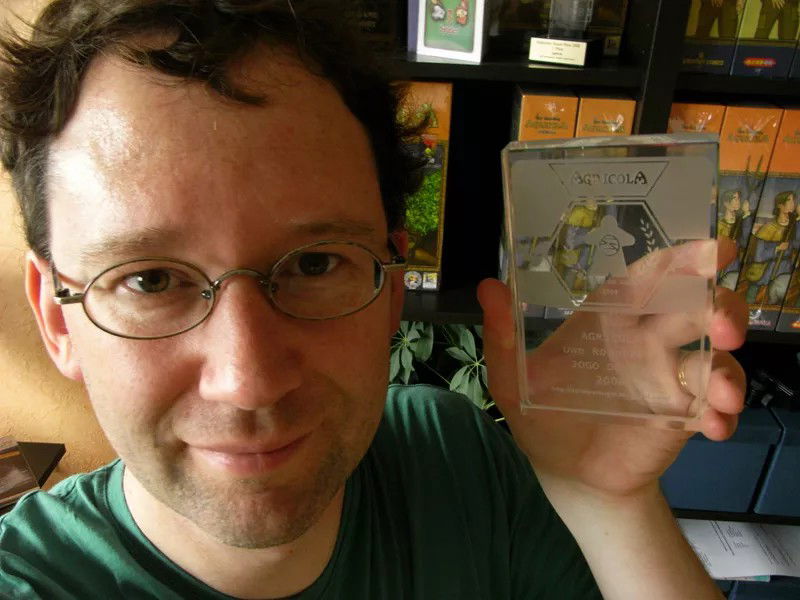
Given the game's success, Uwe Rosenberg created a simplified version of Agricola, called Agricola: All Creatures Big and Small, focused solely on raising livestock, without the worker-centric mechanics. It was designed to be more accessible and quick to play, and it worked!
With a constant agricultura theme in their games, alongside worker placement mechanics, Uwe Rosenberg created other equally famous games: Caverna and A Feast for Odin, obviously influenced by Agricola.
So, let's get to the game!
Agricola - Game Info
Agricola is a 1-to-5 players game, age 12+, by designer Uwe Rosenberg. Art by Klemens Franz.
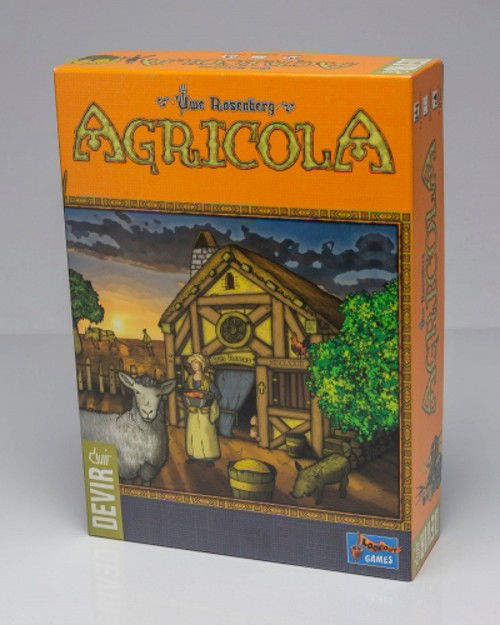
Agricola was released in 2007 by Lookout Games, and in 2015 in Brazil by Devir. As for mechanics, the main ones are: worker placement, resource development, sieges, sequencing turns, and value in unchosen resources.
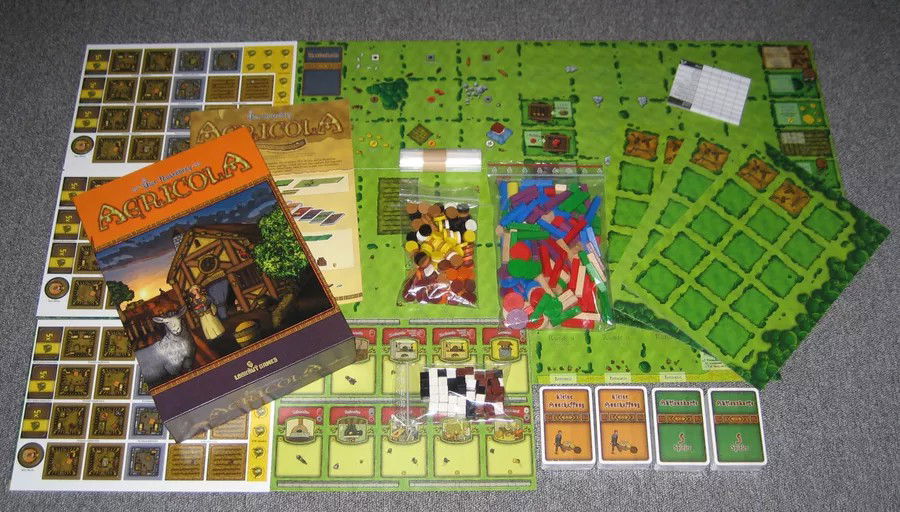
Agricola is considered a classic, and has been collecting awards ever since its release in 2007, for example:
- In 2007, it won the Meeples Choice Award;
- In 2008, it was named Best Family and Adult Game by Deutscher Spiele Preis;
- Also in 2008, won Best Board Game and Game of the Year by Golden Geek;
- Also in 2008, won the Hra Roku and JUG;
- As mentioned, also won the Spiel des Jahres, in 2008;
- In 2009, won both the As d'Or and the Gra Roku;
- Also in 2009, won the Lucca Games, Ludoteca Ideale, and Lys Passioné;
- Finally, in 2025, it was inducted to the renowned BoardGameGeek Hall of Fame.
The Game
We are a family of peasants in the 17th century, trying to get back on our feet. We have a hut, a plot of land, and a little food.
This is our opportunity to improve our home, cultivate the fields, raise animals, grow our family, and ultimately, live a better life.
This is the setting of Agricola!
The game starts with a peasant couple in a wooden hut with two rooms. Since each player's land has 15 spaces, two of them are already used for the player's wooden hut, thus taking up two spaces. This leaves 13 spaces left for players to do whatever they want. They start with a small amount of food; after all, these are hard times.

Agricola is played in rounds. Each round follows these phases:
- 1) Start the round: draw a new Round card;
- 2) Replenish: place new goods and animals;
- 3) Work Phase: allocate workers;
- 4) Return home: workers return home.
At the end of some specific rounds, there is a Harvest Time, which also follows some phases:
- 1)Field Phase: each player harvests a vegetable and/or grain from a Sown Field;
- 2) Feeding: each family member consumes 2 Food. If they cannot be fed, take a begging card (which results in a negative point at the end of the game);
- 3) Breeding: if there are at least 2 animals of the same type, a baby is born (only one, regardless of whether there are more than 2 animals of the same species).
The core of the game is part 3 of the round, the Work Phase. This is where we direct our workers to where we want them. The actions are:
- A) Expand: build more rooms;
- B) Renovate: upgrade the wooden hut to a clay hut and then to a stone house;
- C) Family growth: a new family member is born;
- D) Plow fields: prepare the land for sowing;
- E) Sow: plant grains and vegetables;
- F) Bake bread: convert grain into food;
- G) Build fences: to have a place to hold animals;
- H) Build stables: to increase the capacity to hold animals.
- I) Purchase improvements: purchase a stove, oven, carpentry shop, etc.
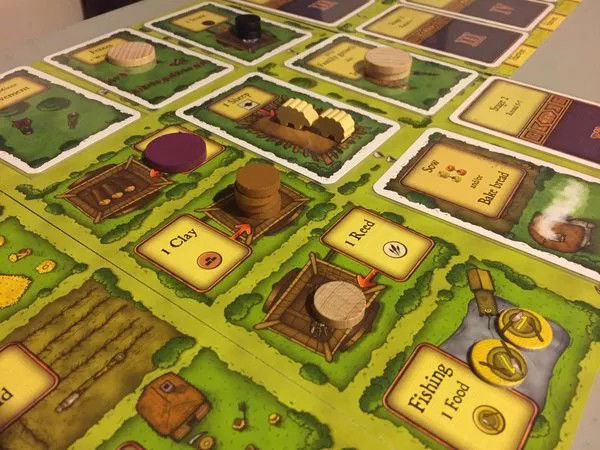
During the game, as the rounds progress, new locations open up and new possibilities emerge, allowing for more locations and actions, such as:
- acquire sheep, wild board, and cattle;
- collect grain and vegetable for sowing;
- collect food, wood, stone, and reed.
These are specific locations, some of which available from the start of the game. The beauty of Agricola is that they are placed in a random order, meaning you never know when exactly they will come into play.
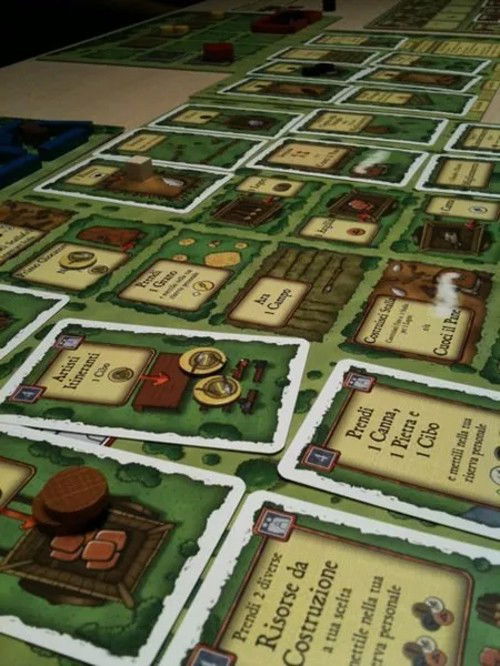
The secret lies in allocating your workers in a logical order to maximize their actions. Initially, there are only two per player, as they're just a couple of peasants. Remember: when a location is occupied by a worker, whether yours or another player's, it becomes unavailable for the rest of the round, so think carefully about where to place your worker.
Of course, as the family grows, the number of workers also grow, but this also means you'll need more food, additional bedrooms, and so on. Develop your farm and occupy as much available space as possible to avoid losing points at the end of the game.
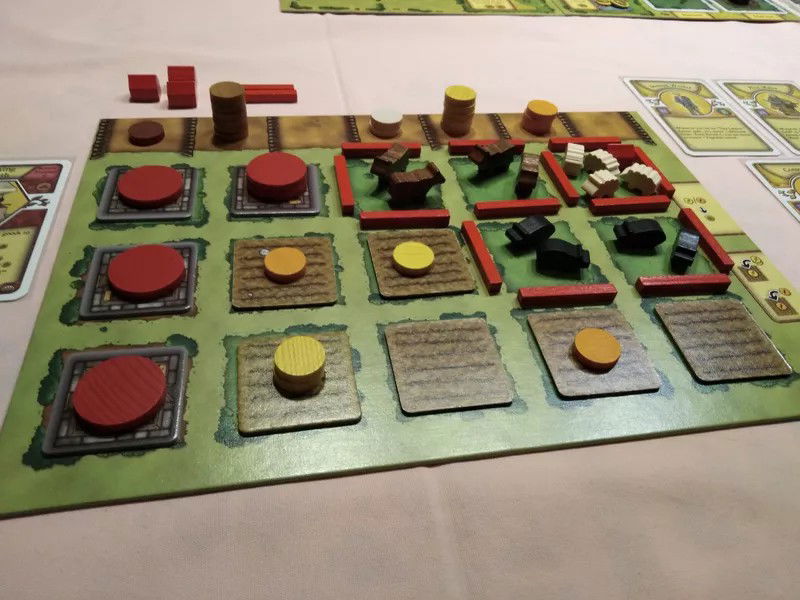
This is a turn in Agricola!
Ending the Game
Game ends after Round 14, once the final Harvest is concluded. Players score points according to this chart:
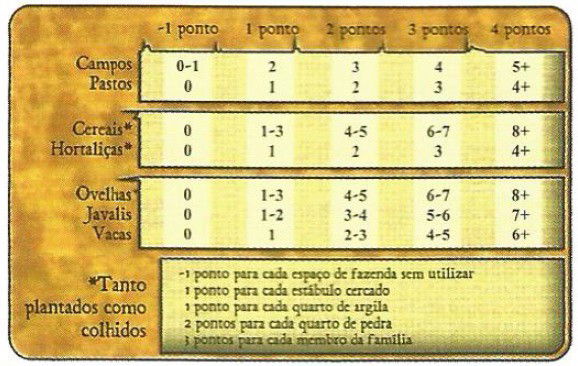
Basically, your score will reflect these:
- the number of fields you have, either sown and unsown;
- the number of fenced pastures (disregarding the size of each pasture);
- the number of grains in your stock and sown in the fields;
- the number of vegetables in your stock and sown in the fields;
- the number of sheep, cattle, and wild boars.
If you fail to score in any of these criteria, you'll also receive 1 negative point for each.
Furthermore, there also a few extras to consider, namely:
- minus 1 point for unused spaces - no buildings (room or stable), no fenced pasture, or unplowed field;
- each fenced stable gives you 1 point;
- each clay hut gives you 1 point;
- each stone house gives you 2 points;
- each family member gives you 3 points;
- each improvement card and end-of-game card has their respective extra points;
- minus 3 points for each begging card.
Whoever scores the most points wins!
Strategy Tips
Agricola is deeply focused in worker placement. Every turn makes you feel like you could have done better, but you lack workers, and if you had them maybe you wouldn't be able to feed them, unless you plan ahead. This is Uwe Rosenberg's style, a hallmark of his games.
For this reason, I recommend that you start with the Family Game rules, to learn the mechanics and ins and outs of the game. After that, you can move on to the other game modes.

In advanced game modes, you choose a deck of cards, all of which offer occupations and improvements:
- Deck E: Easy;
- Deck I: Interactive;
- Deck K: Complex.
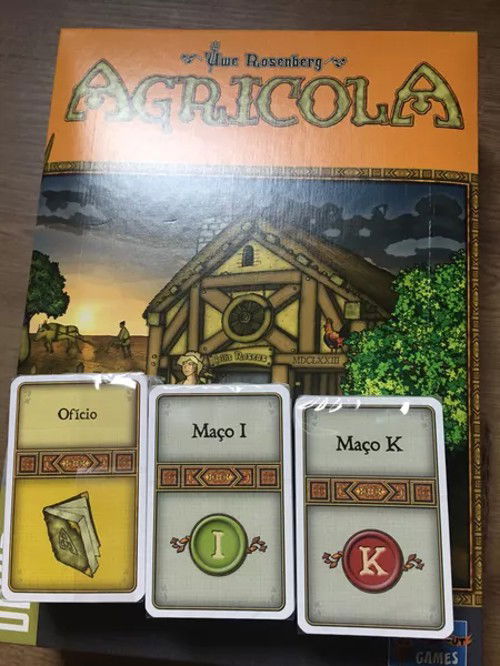
Interestingly, the decks have these initials after their original German names: Einfach (easy), Interaktiv (interactive), and Komplex (complex). These decks gives the game a new twist and several new possibilities.
The golden tip is: use all the spaces available. Each unoccupied space takes away precious points at the end of the game and will make a difference. Plow the fields, build fences, expand your house, build stables—do anything, but occupy your land.
The whole game ends up requiring you to create a well-aligned farm to ensure everything runs smoothly:
- have enough rooms to accommodate all your family members;
- have fenced pastures for the three different types of animals and their offspring;
- have plowed and sown fields always at hand;
- constantly improve your home to score more points;
- purchase improvements to enhance food production with meat, grains, and vegetables;
- in the advanced mode, learn new skills to increase your workers' efficiency.
Here's a truth about Agricola: you'll never accomplish everything you planned for, or wanted, in one turn. I say this because, as already mentioned, locations become unavailable when another player occupies them, so always try to be the first player. There's a specific location for this on the board, but at a high cost, almost like a wasted action.
To mitigate this, the obvious path is to expand the family, thus adding more members, more people to work, which results in more actions per turn and more points at the end of the game. However, remember that you'll need more rooms in the house and more food.
When allocating your workers, use logic: first you harvest, then you eat—that's the rule. It would be wrong to build a fence without first collecting wood. It seems simple, but this happens frequently in the game, and for a very simple reason, the fear of losing the fence-building action because another player has previously occupied the location, so you rush and place one of your workers there, and forget that there is no wood yet.
Agricola teaches that the solution to this is to produce in one turn, and consume in the next, making it "a little" easier and more logical. However, this isn't a game rule; it comes with experience.
Finally, one of the game's critical moments is the Harvest, which occurs at the end of rounds 4, 7, 9, 11, 13, and 14. At this point, harvesting what you've sown and receiving new offspring from farm animals is certainly good, but feeding your family members is the most difficult part.
Since Harvests are fixed, you can plan as much as possible to ensure you don't run out of food. I'll say it's not an easy task, but it's not impossible either. I've seen many people use raw grains to feed their farm animals and then have to cook them to avoid starving and having to beg.
Based on these tips, build your best strategy, choose the best locations to work, maximize the use of your land, and win in Agricola!
Unboxing, Rules, and Gameplay Videos
Unboxing:
Rules:
Gameplay:
Pedagogical Tips
If you're looking for a game to capture your kids' attention, I recommend Agricola. It's a management game, but with a fun theme: a farm. Show the kids all the game pieces, and they'll realize they're actually playing on a farm. It's an excellent stimulation before the game begins.
In Devir's version of Agricola, the animal meeples were called animeeples because they're not just "cubes," they're tiny animals. This makes kids' eyes shine when they look at miniature wild boars, cattle, and sheep.
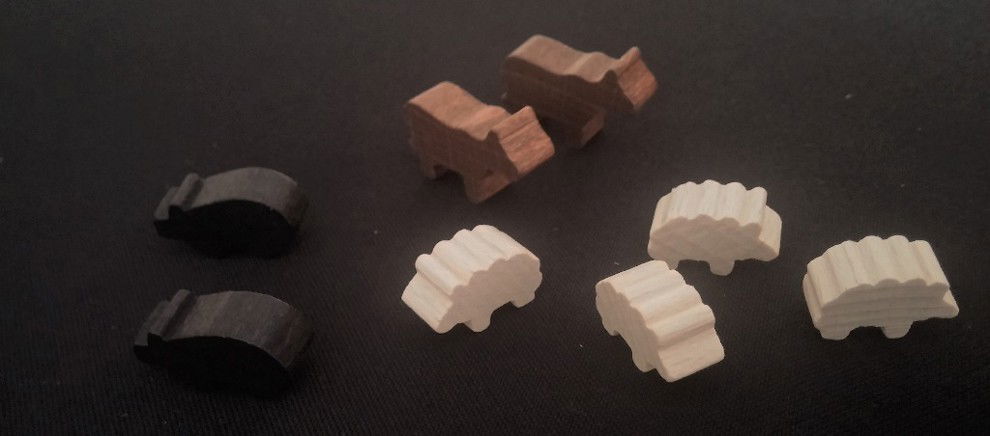
The best thing you'll do is let the kids dictate the pace. The game is very intuitive, so kids can manage it themselves. They'll soon discover the logic behind everything: that to sow, you first need seeds; to build a fence, you first need wood—it's just simple.
Without realizing it, they'll be making calculations to trade one material for another, a resource for another—always using basic math and learning from it.
Management and strategy will also come naturally, and the kids will find themselves learning important management principles and planning for the future while playing. It's really cool to see this happen!
Decision-making will also be a key factor, as they'll find themselves deciding where to send their workers every round. They'll discover, through play, that every decision involves choices, and that this will make a difference. It's a lesson for life.
Educationally, Agricola encourages strategy, management, decision-making, logical-mathematical reasoning, and, on top of that, it's fun!
I recommend Agricola for your collection!!!









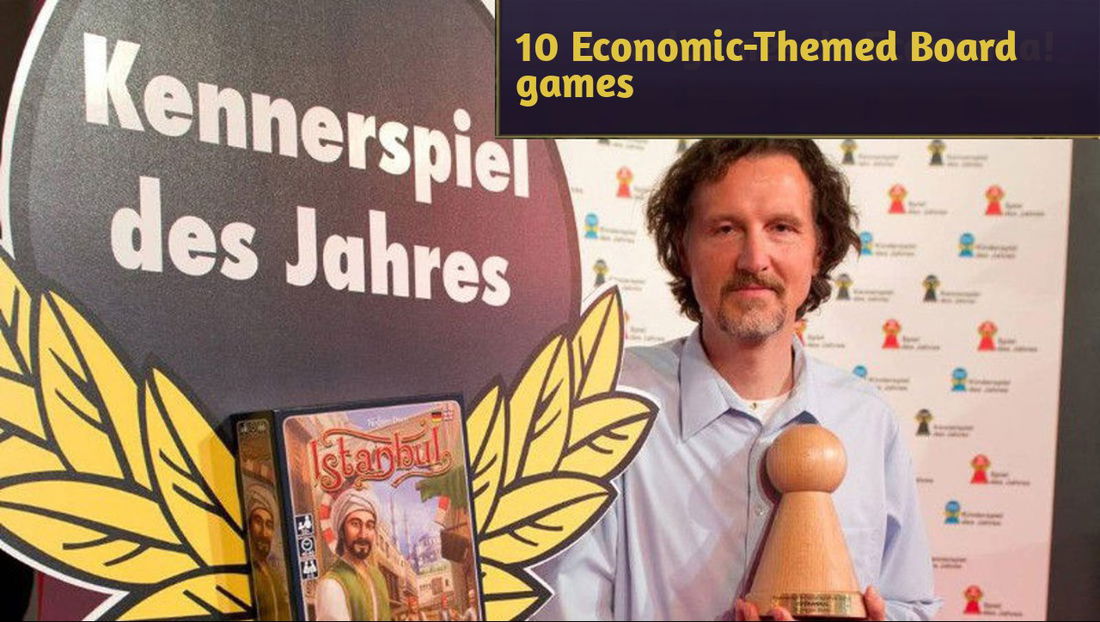


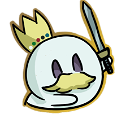
— 评论 0
, 反应 1
成为第一个发表评论的人